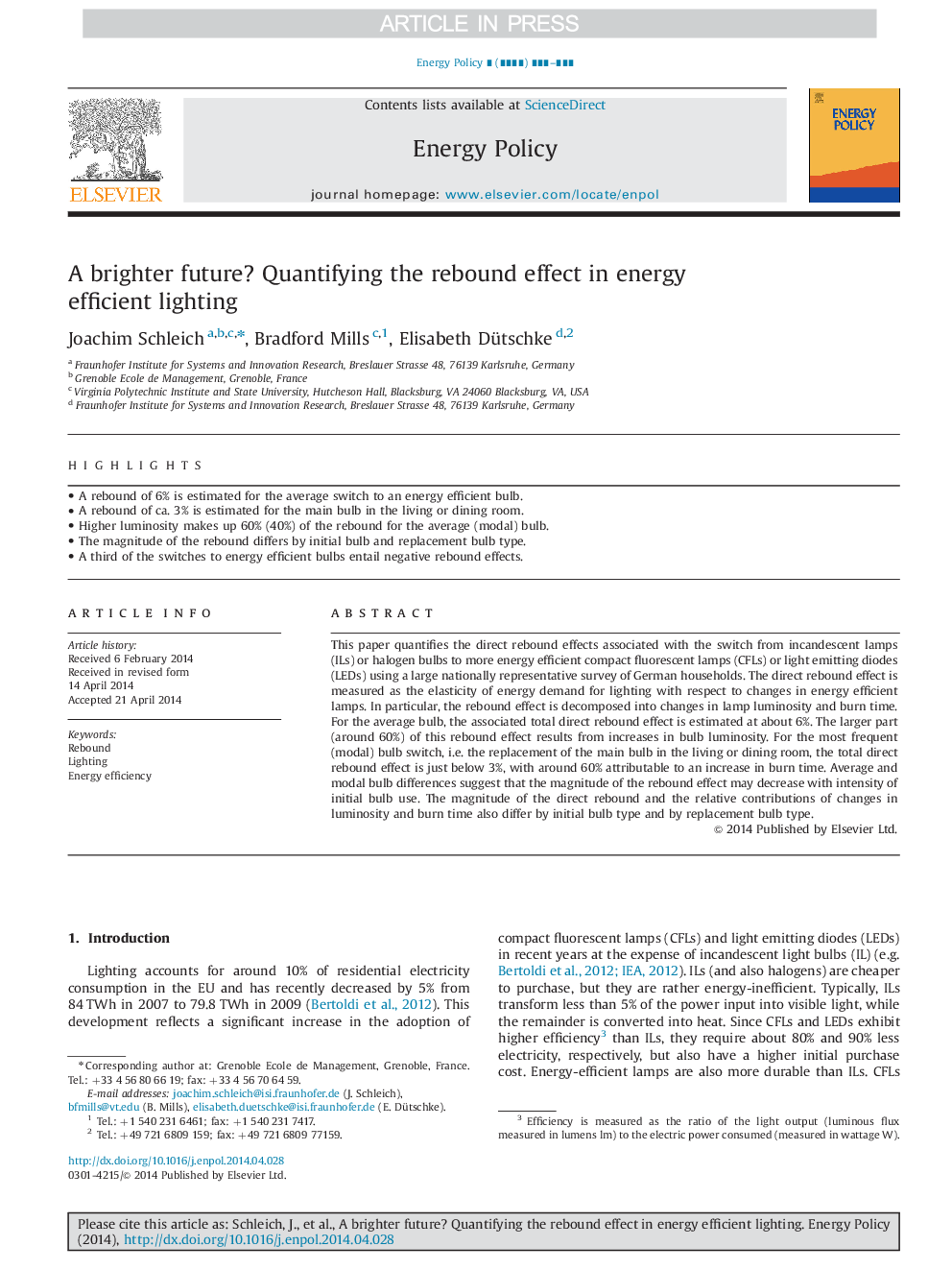| کد مقاله | کد نشریه | سال انتشار | مقاله انگلیسی | نسخه تمام متن |
|---|---|---|---|---|
| 7401782 | 1481286 | 2014 | 8 صفحه PDF | دانلود رایگان |
عنوان انگلیسی مقاله ISI
A brighter future? Quantifying the rebound effect in energy efficient lighting
دانلود مقاله + سفارش ترجمه
دانلود مقاله ISI انگلیسی
رایگان برای ایرانیان
موضوعات مرتبط
مهندسی و علوم پایه
مهندسی انرژی
مهندسی انرژی و فناوری های برق
پیش نمایش صفحه اول مقاله

چکیده انگلیسی
This paper quantifies the direct rebound effects associated with the switch from incandescent lamps (ILs) or halogen bulbs to more energy efficient compact fluorescent lamps (CFLs) or light emitting diodes (LEDs) using a large nationally representative survey of German households. The direct rebound effect is measured as the elasticity of energy demand for lighting with respect to changes in energy efficient lamps. In particular, the rebound effect is decomposed into changes in lamp luminosity and burn time. For the average bulb, the associated total direct rebound effect is estimated at about 6%. The larger part (around 60%) of this rebound effect results from increases in bulb luminosity. For the most frequent (modal) bulb switch, i.e. the replacement of the main bulb in the living or dining room, the total direct rebound effect is just below 3%, with around 60% attributable to an increase in burn time. Average and modal bulb differences suggest that the magnitude of the rebound effect may decrease with intensity of initial bulb use. The magnitude of the direct rebound and the relative contributions of changes in luminosity and burn time also differ by initial bulb type and by replacement bulb type.
ناشر
Database: Elsevier - ScienceDirect (ساینس دایرکت)
Journal: Energy Policy - Volume 72, September 2014, Pages 35-42
Journal: Energy Policy - Volume 72, September 2014, Pages 35-42
نویسندگان
Joachim Schleich, Bradford Mills, Elisabeth Dütschke,